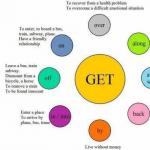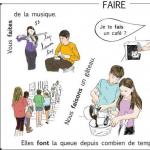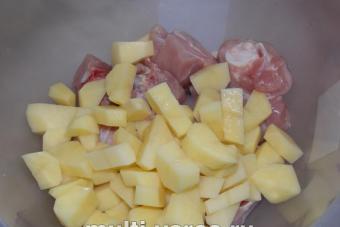In their e-mails to the editor, cat owners often complain: we wake up in the morning, and there are vomit near the bowl of food, pieces of undigested food are visible, etc. And most often such collisions happen to a cat at night; during the day everything seems to be fine. Are there reasons for concern? We turned to experts for clarification.
If your cat vomits soon after eating, respectively, this food has not yet had time to be digested and absorbed by the body, then this can really indicate a serious problem. But don't panic ahead of time! Cats are very interesting creatures in their own right. In principle, they do not eat what is not suitable for food - pieces of plastic, paper, needles, threads and yarn, but such cases do occur. This is evidenced by my practice and letters from our readers. Sometimes all these obviously inedible things get stuck in the esophagus. When a cat starts a "normal" meal, she can easily vomit what she eats. Another picture - your cat is absolutely healthy, but she suddenly began to eat very quickly or eat food in very large volumes, much more than she can absorb. In this case, excess food also comes out through vomiting!
So, are we dealing with a problem or a false alarm? Here are some practical tips for you.
First. Watch how your pet eats. He is in a hurry, choking - limit portions. Let the cat eat a little, but more often. By the way, this way of eating is a good prevention of obesity.
Second. Your cat may ingest her own hairballs while bathing or grooming herself. Take the initiative in your hands, help the cat to take care of himself, especially if she is a long-haired breed. Purchase an effective and convenient comb-comb (there is a wide choice in pet stores and online stores from well-known manufacturers) and make it a rule to comb your pet periodically, as needed. If you are not confident in your abilities, try to talk to a veterinarian, seek the services of professional grooming salons.
Third. Very often, nausea and vomiting in cats is caused by an unmotivated and rapid change in regimen and diet. Some owners like to experiment with food from different manufacturers or just randomly, at their discretion, feed a wide variety of products to the cat. This is fundamentally wrong.
Of course, there are times when, for medical reasons, as prescribed by a veterinarian, it is necessary to adjust the diet. But this is done strictly in steps, new products are introduced in stages, their share increases gradually and only then is brought to the optimum. In general, the process of transferring a cat to a new diet takes about a week, sometimes a little more, depending on the characteristics of a particular animal. There is also intolerance to certain products and even delicacies by animals. When introducing a new food or treat, always check your pet's reaction. Everything went well - you can continue on.
Fourth. In some cases, nausea after eating may be the result of an allergic reaction. This may require expert advice.
If in any doubt, either call or take the animal to the veterinarian. He will either dispel your fears and anxieties, or prescribe the appropriate treatment.
High-quality nutritious food plays a huge role in maintaining the health of the cat and its attractive appearance. But it becomes even more important when the animal has health problems. During periods of poor health in a pet, the owner should pay special attention to his diet, make sure that the weakened body receives enough vitamins and nutrients. And during recovery, animals do require more wholesome nutritious food than usual.
Reasons for not eating
Often this eating behavior of a pet is the result of various diseases, especially those associated with the gastrointestinal tract, as well as other health problems:
- 1. A foreign object in the throat or esophagus that the animal cannot remove on its own.
- 2. Serious body injury.
- 3. Poisoning.
- 4. Stress.
A cat, if she does not eat anything, must be shown to an experienced veterinarian, undergo an examination and pass all the prescribed tests: blood, urine, ultrasound.
How to feed a sick cat?
If the portions of the animal during the illness have decreased, then there is no need to panic. Important track in order to cat saw lot water. This will prevent dangerous dehydration. If the pet categorically refuses any food intake, then in this case you will need to be patient and look for ways to help feed the animal and prevent nutritional deficiencies in its body. Among them:
- 1. Warm food, heated to about 39 ° C, becomes more fragrant and attractive to the cat.
- 2. If for some reason the animal has problems with smell, it is worth putting small pieces of treats on its lips.
- 3. Sick cats are much more willing to eat liquid meals than solid ones, and they should become the basis of the diet.
- 4. If it is difficult for the animal to get up to reach the feeding area, the best solution would be to give him food from your hand, while stroking and calming the pet.


Syringe feeding
Sometimes the animal is so weakened that it is not able to move independently and chew food. In this case, the owner must assist him in eating. It is convenient to use a miniature syringe for this. A 2 ml product will suffice.
The tip is cut off from the syringe with a knife, and the edges are cleaned so that they are not sharp. The tube is filled with liquid food, after which the product is brought to the nose of the animal. This is necessary for the pet to smell the treat.
As soon as the cat opens its mouth a little, it is worth slowly squeezing a small portion of food onto its tongue. If the animal does not do this on its own, you will have to slightly open its jaws with your fingers. Do not press too hard, so as not to hurt the pet. Otherwise, the next time the feeding procedure will cause him negative emotions.
If there is no syringe at hand, and the animal refuses to eat on its own, you can force the cat to eat in another way. To do this, you need to take small pieces of soft food and put them on the root of the cat's tongue. Then you need to close the pet's mouth and rub his throat with careful, gentle movements from top to bottom. This will make the swallowing process easier. In the same way, you can give the cat pills during treatment.

A kitten appeared in the house - what and how to feed it?
What to feed?
The market offers a huge selection of ready-made food for cats suffering from one disease or another. They contribute to a speedy recovery and alleviate the condition of the animal. Among these products, there are options designed for pets who refuse to eat.
These foods are available in liquid form. As a result, a sick animal will be able to lap them without much effort, or the owner will be able to independently pour food into the animal's mouth with a syringe. These feeds have several features:
- 1. They are very tasty and with their aroma cause a strong appetite in cats. The mixtures have a rich composition, so even a minimal portion of such a treat can provide the animal with all the necessary nutrients.
- 2. Products are high in calories.
Special feeds should be prescribed exclusively by a veterinarian. It is impossible, noticing that the animal does not feel well, immediately purchase such a product for him. The specialist will indicate what kind of food you need to purchase and what dose the cat will have to eat per day. The recommended portion is divided into 5-6 times.
Owners can spend a lot of time researching the preferences of their pets. By observing cats eating food, a conclusion can be drawn. They slowly consume food, and do not eat what they do not like. The owners can only satisfy the requirements of the pet and monitor its health. The first sign that a cat is not well is the refusal of food for 3 days or more. Do not rush to sound the alarm, there are many reasons why the cat does not eat anything.
- Pain syndrome and stress.
- Diseases of the oral cavity.
- Inflammatory processes in the intestines or stomach.
- Viral infection.
- Disease of the liver, kidneys and urolithiasis.
- Foreign body in the stomach or intestines.
It is worth considering in more detail each factor that will help answer the question, what to do if a domestic cat does not want to eat?
stress or pain syndrome
Stress in an animal can be caused by rearranging things in the house or a change of residence. Adult animals have difficulty getting used to a new place, so the lack of appetite is normal.
The owner should watch the animal, as the cat may refuse to eat due to the fact that the feeder is in an unusual place for her. Cats are independent and prefer to absorb food in a secluded place. An animal can refuse food for a day during estrus, childbirth, castration. In this case, you should not force a cat or a cat to eat, after a while, everything will work out. The main thing is that after the hunger strike the cat does not overeat, otherwise it will lead to more serious problems. If the kitten does not eat for 3 days, but only sleeps, it is possible that he will adapt to the new environment, the doctor will be able to make an accurate diagnosis.
The pain syndrome often causes a chronic disease. If the cat has stopped eating, it is worth consulting with a veterinarian.
Diseases of the oral cavity
 Dental problems are fairly common reasons why a cat does not eat, only drinks water.
Dental problems are fairly common reasons why a cat does not eat, only drinks water.
Why is this happening? Incomplete teeth in an animal is the cause of diseases of the digestive tract. This is explained by the fact that the cat experiences discomfort when absorbing this or that food, as a result, it swallows food without chewing. This problem can be corrected by choosing the right type of feeding.
The formation of tartar provokes chronic inflammation of the gums and loss of teeth. It is necessary to remove tartar in time and regularly care for the animal's oral cavity.
Caries overcomes our smaller brothers, it is also the source of many problems. Only by identifying the cause can we deal with the consequences.
Inflammatory processes in the intestines and stomach
It happens that the owners provide the necessary care for a pet, and he often gets sick. Why is this happening?
It also happens that a cat injures the intestines with a bone not digested by the body. As a result, the structure of the mucous membrane is disturbed, diseases of the gastrointestinal tract appear. It is impossible to ignore alarming symptoms, this can lead to depletion of the cat's body and even death.
Poisoning
 The gag reflex in cats is very well developed, so many pet owners do not worry too much about vomiting in their pet. It is believed that vomiting helps the cat get rid of hairballs. If the cat is active after such a procedure, there is no need to worry.
The gag reflex in cats is very well developed, so many pet owners do not worry too much about vomiting in their pet. It is believed that vomiting helps the cat get rid of hairballs. If the cat is active after such a procedure, there is no need to worry.
You should be concerned when weakness, lethargy, muscle tremors and other “unhealthy” symptoms are attributed to vomiting. Salivation with vomiting indicates poisoning. Severe poisoning with poisons in most cases leads to the death of the animal. Missing foods, household chemicals or pills eaten by a cat can cause severe intoxication. If the cat has eaten poison, you should immediately go to the veterinarian and say what kind of substance poisoned the animal. This will make it easier for the doctor to choose the right treatment.
Viral infection
Common symptoms of a viral infection are: sneezing and discharge from the nose and eyes, complete lack of appetite, dehydration, fever, a combination of all of the above.
Self-treatment of a cat, especially if it is not vaccinated, is quite risky. Whether a cat copes with an infection depends on its immunity. The animal may refuse food for 3 days or more, in which case, it will weaken. Do not risk, consult a doctor who can establish a diagnosis after taking a blood test from an animal.
Diseases of the liver, kidneys and urolithiasis
 If the cat does not eat or drink, he may have urolithiasis, accompanied by the appearance of stones, sand in the kidneys and bladder. It is not difficult to identify this disease. The cat is lethargic, refuses to eat, constant urge to urinate, blood in the urine. Such symptoms indicate problems with the animal's bladder. Take preventive measures, proper cat nutrition is the best prevention against urolithiasis.
If the cat does not eat or drink, he may have urolithiasis, accompanied by the appearance of stones, sand in the kidneys and bladder. It is not difficult to identify this disease. The cat is lethargic, refuses to eat, constant urge to urinate, blood in the urine. Such symptoms indicate problems with the animal's bladder. Take preventive measures, proper cat nutrition is the best prevention against urolithiasis.
According to statistics, cats are three times more likely to develop kidney disease than dogs. Nutrition is directly related to kidney function. Kidney failure leads to violations of the natural processes in the body of the animal. The result of a neglected disease is vomiting, loss of appetite, lethargy, bad breath. It is difficult to diagnose this disease, because the symptoms are characteristic of other diseases. Do not allow the disease to become chronic, then it will be very difficult to fight it.
Liver diseases are accompanied by the above symptoms. A cat may not eat for 3 days or more. To avoid these problems, you should make a competent diet for your beloved pet. A balanced diet supplies the body of the animal with all the necessary elements.
Foreign body in the stomach or intestines
Intestinal obstruction in an animal is a serious reason to take it to the veterinarian. Ignoring the problem often leads to the death of the pet. Obstruction is provoked by skins from sausages, Christmas tree needles and rain, bones and even shreds of wool.
During obstruction, gastric juice continues to be secreted, but it stagnates in the stomach or intestines and is not absorbed by the body. The animal reacts to this by vomiting, during which the body is actively dehydrated. Symptoms of intestinal obstruction are: vomiting, loss of appetite and complete refusal of food, an enlarged belly, the cat painfully reacts to its sensations. Why does the animal not eat for 3 days, only drinks water and sleeps? What can be done?
- Do not feed the animal, this will induce vomiting.
- Do not do an enema, you risk damaging the intestines.
- Do not give your cat a laxative, as this will contract the bowel muscles.
- Do not use antiemetics, they are temporary but do not fix the problem.
- Be sure to take the animal to the vet.
Helping an animal refuse food
First of all, determine the reason for refusing food. If a cat eats certain foods, then it is worth reviewing her diet so that the body receives all the necessary substances.
Watch your pet's behavior. If he goes outside and refuses food, he may have already eaten. Do not panic if the cat does not eat for 3 days. The main thing is that she drinks water and is active.
Take care of the health of the animal, because we are responsible for those we have tamed. Do not rely on "maybe", contact your veterinarian as soon as you feel something is wrong. Early treatment can save your cat's life.
Every owner of a domestic cat has at least once encountered ailments in their pet, and it is not uncommon to visit a clinic with symptoms such as nausea or vomiting. However, the situation when a cat vomits after eating undigested food can be especially dangerous: in addition to problems with nutrition or ingestion of wool, it can indicate serious problems with digestion and the functioning of internal organs.
Let's try to figure out why such a nuisance happened to your cat, and what to do in this difficult situation?
- Symptoms that should see a doctor
- Symptoms
- How to help a cat with vomiting?
- Prevention of vomiting after eating
Why can a cat feel sick after eating?
 In fact, there are many reasons why your pet may have vomiting after eating. Often the problem lies in the food itself: the cat eats too much or too quickly, chews food poorly. As a result, all the food that is difficult for her stomach to digest returns to the outside in the form of vomiting: if the cat is sick immediately after eating in large, unchewed pieces, this is most likely your case.
In fact, there are many reasons why your pet may have vomiting after eating. Often the problem lies in the food itself: the cat eats too much or too quickly, chews food poorly. As a result, all the food that is difficult for her stomach to digest returns to the outside in the form of vomiting: if the cat is sick immediately after eating in large, unchewed pieces, this is most likely your case.
Especially often such a nuisance occurs with wet cat food in bags, which the cat can be too lazy to chew properly because of its softness. It is not difficult to deal with such nausea: just feed your pet a little, but more often, and the problem will disappear by itself.
If you've changed your cat's diet and the nausea persists, the food may be the problem. Sometimes pets have an allergic reaction to the products of a certain manufacturer or even to a specific taste: if this food was purchased not so long ago, and the cat began to vomit just after it appeared, perhaps this is precisely the point.
Another important food-related reason is its expiration date. Sometimes the owners inattentively follow the numbers on the package, or put food in the pet's bowl for the whole day and change it only after a day. This is normal when handling dry food - however, wet food will inevitably spoil after twelve hours out of the refrigerator! Be careful in everything that concerns the nutrition of your cat, and feed it at least twice a day - then this trouble will not happen.
In addition, your cat may start to vomit after eating. during pregnancy. This is due to several changes in the body of the future cat-mother: with hormonal changes, with the phenomenon of toxicosis and with the pressure of the kittens on the internal organs. The most common feeding problem in a cat's pregnancy is the decrease in available space in the cat's stomach; feed her small meals and the vomiting will go away. However, it is worth noting that such problems cannot begin before the third week of pregnancy.
Cats may vomit after sterilization or any other surgical intervention. The veterinarian always gives strict instructions about feeding the pet after coming out of anesthesia: during the first twelve hours it is undesirable to give her any food, because the internal organs are in "hibernation". If you don't follow this advice, your cat may vomit - but there's nothing to worry about! Just give her water to drink, and give her food again a little later.
There are other specific causes for cat vomiting: these include motion sickness in transport, stress when moving, cleaning the stomach of hair in long-haired animals. However, none of these causes is in any way related to nutrition, and the appearance of such vomiting after eating is nothing more than a coincidence. Isolated cases of vomiting after feeding may be associated with any of these phenomena.
However, if the cat vomits after eating not for the first time, and changing her diet and diet did not help, you should contact a specialist. It is possible that your pet is seriously ill.
Symptoms that should see a doctor
 In addition to the harmless and natural phenomena listed above that can cause a cat to vomit after eating, the cause may also be in some kind of disease.
In addition to the harmless and natural phenomena listed above that can cause a cat to vomit after eating, the cause may also be in some kind of disease.
Try to define what type of vomiting does your pet have. Some of them are not dangerous and in the absence of other symptoms are not a reason to go to the veterinary clinic. However, others are a clear signal that something is wrong with the health of the cat:
- Vomiting white foam. This type of vomiting in cats is not considered something dangerous if there are no other symptoms of illness. Such vomiting can be observed with severe overeating, with getting rid of hairballs, with heartburn or hunger - all these problems are easily solved and are not a cause for concern;
- Vomiting with blood. There are several reasons for the appearance of blood clots in the vomit: it can be a minor injury in the oral cavity received while eating or playing, and a serious illness in which you need to urgently go to the clinic. Examine the cat's mouth, paying special attention to the sky - if you do not find scratches and bleeding, it is better to play it safe and go to the veterinarian;
- Vomiting yellow or green. These types of vomiting already clearly indicate that the animal is unhealthy. The yellow color of the vomit is most likely bile, and the green color more often indicates diseases of the intestines and stomach. In any of these cases, do not hesitate to go to the veterinary clinic - this condition can be very dangerous for your cat.
It is also worth noting that if vomiting is observed not in an adult pet, but in a kitten, you need to immediately see a veterinarian. Even foamy vomiting in small kittens can be a sign of a serious illness that his body cannot cope with.
Symptoms
Also look out for other symptoms that can tell you a lot about your cat's condition. In addition to frequent and profuse vomiting, observed constantly for several days, The wake-up calls will be:

If you experience one or more of these symptoms, please see a specialist. It is important that your animal is examined and treated on time.
How to help a cat with vomiting?
When your cat is constantly throwing up or throwing up, stop feeding her for some time, it is advisable to wait at least four or five hours. However, make sure that a bowl of fresh water is always in sight of the animal: when vomiting occurs, severe dehydration occurs, which must be prevented. Do not force a cat to drink if she does not feel like it - she understands the needs of her body better and will definitely drink all the water when she needs it.
Measure the cat's temperature to exclude any inflammatory process or, on the contrary, to confirm its presence, and if blood is found in the vomit, inspect the oral cavity for scratches and wounds. If nothing of the kind is found, and the blood clots are dark in color, it is most likely a serious disease of the gastrointestinal tract.
However, even in the case when, in addition to vomiting, there are no warning symptoms, you can play it safe and take your pet to a vet. After a professional examination, the veterinarian will make a final verdict - and if everything is in order with the cat, you will be sent home, giving recommendations for further care. If something is not right, your pet will be prescribed the appropriate treatment for his case, and you will only have to follow the doctor's instructions so that your cat recovers as soon as possible.
If your cat is throwing up because of overeating or because she eats too fast, feed her often in small portions. Change food if your pet is allergic and keep a close eye on its expiration date and how long it has been in the bowl. If your cat has been diagnosed with chronic vomiting, she will be prescribed a special diet: you can forget about purchased food for the duration of treatment, during this period the cat can only be fed chicken meat, cottage cheese and boiled eggs. Of course, not every cat will like such a diet - but health is more expensive.
For severe vomiting Cerucal and No-Shpu are usually prescribed, which are administered intramuscularly. Sorbents such as Atoxil or Enterosgel are also often prescribed. However, any of these remedies should be prescribed exclusively by a veterinarian, and any improvisation can only make your pet worse.
Herbal remedy for cat nausea
 If you find yourself in a situation where it is not possible to get to the veterinary clinic in the next day or two, and you need to help your pet right now, you can resort to folk remedies. Unlike over-the-counter medications, they won't cause an allergy in your cat, and they certainly won't make things worse: and despite the fact that they only address the symptoms and do little to combat the root cause, it's still better than doing nothing at all.
If you find yourself in a situation where it is not possible to get to the veterinary clinic in the next day or two, and you need to help your pet right now, you can resort to folk remedies. Unlike over-the-counter medications, they won't cause an allergy in your cat, and they certainly won't make things worse: and despite the fact that they only address the symptoms and do little to combat the root cause, it's still better than doing nothing at all.
The best folk remedy for nausea in a cat, time-tested and really able to help, decoctions are considered chamomile, yarrow, St. John's wort and flax seeds. These herbs can be purchased at any pharmacy and brewed individually or all together: one bag of herbs is poured with a liter of water, and then infused for several hours. Water your cat with this decoction three to four times a day, a spoonful for every two kilograms of weight: most likely, vomiting will stop.
However, it is worth noting that the use of folk remedies is possible only for one or two days, no more. After you still need to see a veterinarian. It may seem that the pet is already in order, since the nausea has passed - but this is just the effect of herbs; the cause of the vomiting has not been eliminated, and this should be dealt with by a specialist.
Prevention of vomiting after eating
 For the prevention of cat vomiting It is important to take good care of your pet. First of all, to prevent the occurrence of infections and diseases, regular examinations by a veterinarian and vaccination are necessary. This will help to stop any disease in the bud, at the very moment of its appearance! In addition, during molting, long-haired animals should be carefully combed out to reduce the amount of vomiting due to woolen balls.
For the prevention of cat vomiting It is important to take good care of your pet. First of all, to prevent the occurrence of infections and diseases, regular examinations by a veterinarian and vaccination are necessary. This will help to stop any disease in the bud, at the very moment of its appearance! In addition, during molting, long-haired animals should be carefully combed out to reduce the amount of vomiting due to woolen balls.
Not less important closely monitor your pet's diet, the way he reacts to this or that food, feed him often and not in very large portions, avoiding overeating. A cat's bowl should always be filled with water - nausea due to dehydration in animals is also not uncommon.
If you properly monitor and care for your cat, chances are you won't have problems vomiting after eating. And if any disease still appears, you can contact the veterinary clinic in time and cure the animal as quickly as possible.
Content:
Cats are quite selective in food. However, if you follow the rules of feeding, the animal will have an excellent appetite.
The right time to feed
Habit plays a special role in the life of cats. First, it concerns the daily routine. Secondly, regularity is important. We should try to give food to our pets at the same time. Even if the owner of the pet has forgotten, the “tiger cub” will let you know about himself.It is best if the cat will eat a little bit throughout the day. But for pet owners, this may not be very convenient in time. Adult cats may well eat only in the morning and in the evening. To avoid begging at the table, the animal is fed well in advance of the meal of family members. Cats over a year old do not eat everything at once and often leave food in the bowl. They eat little. They can be fed three times a day.
Place for a bowl
The bowl is located in a secluded corner so that nothing prevents the cat from eating.The bowl is set on a smooth, but at the same time slightly rough surface. So that the animal does not stain the floor or carpet, an oilcloth or tray is placed under the bowl, because cats have a habit of pulling out food and feasting on it on the floor.
The number of bowls is equal to the number of cats in the house.
How to feed?
Neither hot nor cold food is suitable for a small cat's stomach. Wet food stored in the refrigerator is left in the room for a while before feeding to warm up a little. Such food is applied as much as the cat can eat at one meal. Unpacked jars of food are kept in the refrigerator hermetically sealed with lids. Older cats may approach the bowl 4 or 5 times a day, depending on weight and lifestyle. Wet food left in the cat's dishes after a meal is thrown out after thirty or sixty minutes, but no more. If the food dries up and smells bad, fluffy gourmets will no longer eat it. This is why cat utensils should always be kept clean. Dry food stays in the plate longer - it does not spoil so quickly.The caloric content of the diet depends on the lifestyle of the cat and its size. Large cat breeds and fidgets eat more. On the label of a jar of wet food, its calorie content is indicated, that is, about 1200 kcal per 400 g. Dry food (100 g) contains about 1500 kcal. How much the animal will consume feed, the owner decides. For cats weighing three kilograms, the norm will be 900 kcal. For those who weigh four kilograms or more - 1200-1500 kcal per day.
What vitamins do cats need?
Tauric acid is vital for striped purrs. The body of the animal does not produce it. In order for the skin, eyes and gastrointestinal tract of cats to be normal, their diet must include dairy products, boiled chicken or pork liver, which contains vitamin A.
Ready food: yes or no?
Fresh meat or canned food? The question remains relevant among cat lovers.Pros of dry and wet food:
- saves time;
- the composition of ready-made feeds in the optimal amount includes nutrients, nutrients and vitamins. Biologists, veterinarians and nutritionists test the quality of the product on many cats.
- high-quality varieties of professional feeds are expensive, and cheap ones are replete with flavors, flavorings and are made from meat by-products;
- the cat's stomach adapts to a specific type of food, whether it be natural food or food. In the process of digestion, it releases special enzymes that contribute to better absorption of what is consumed. The cat's body does not produce both types of enzymes at the same time.






